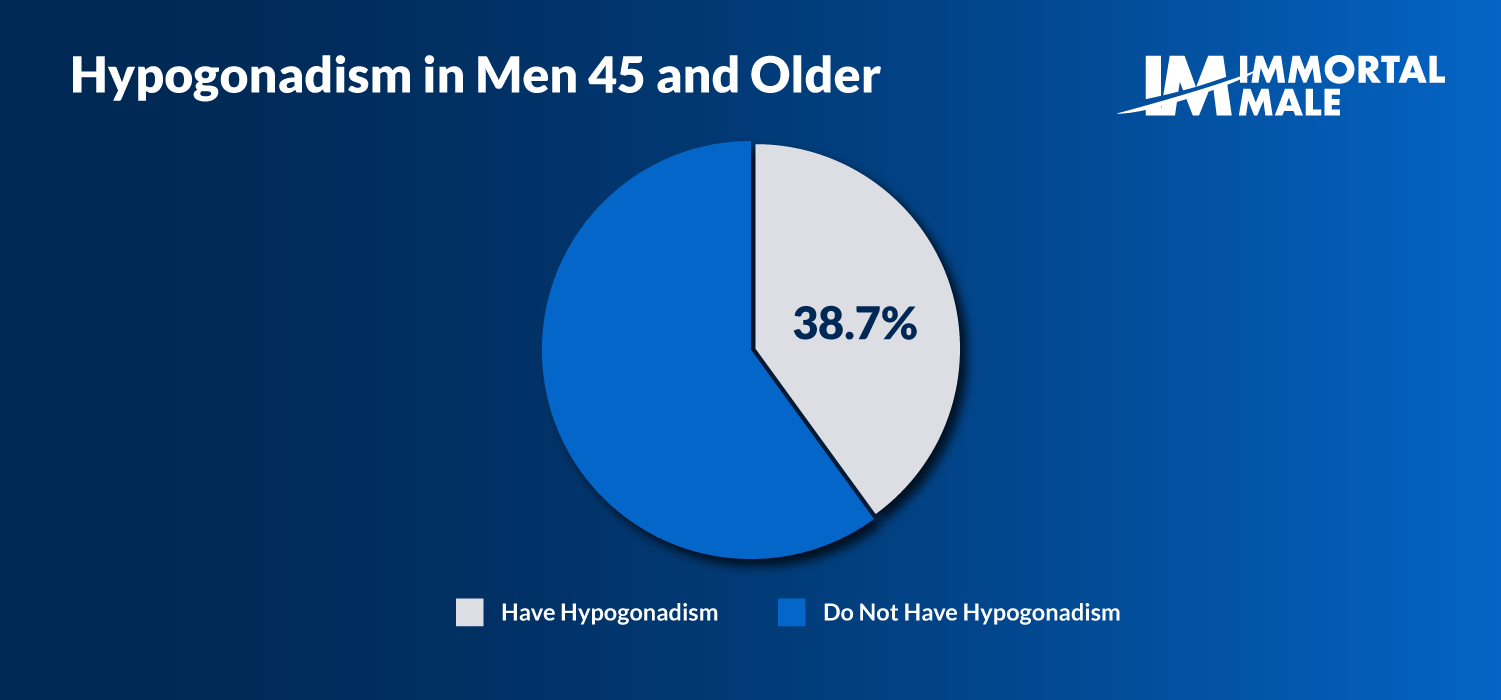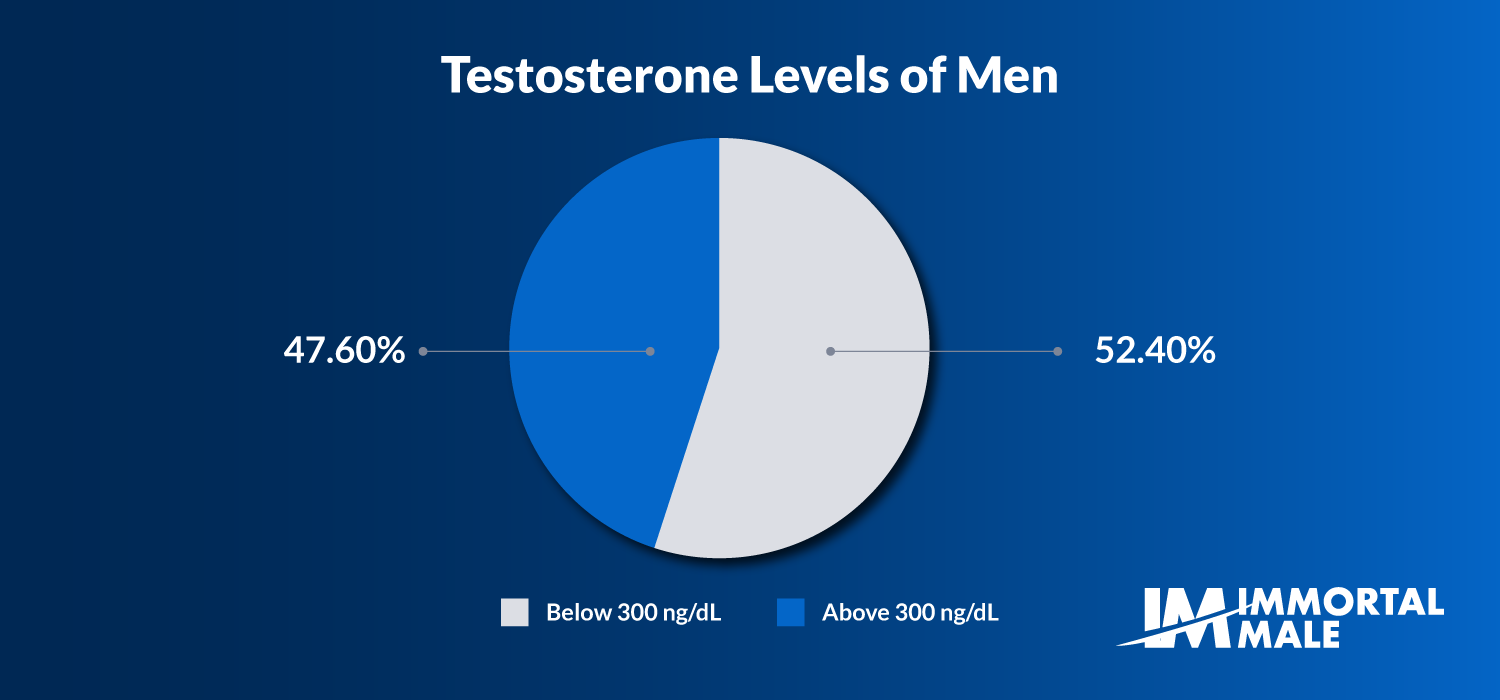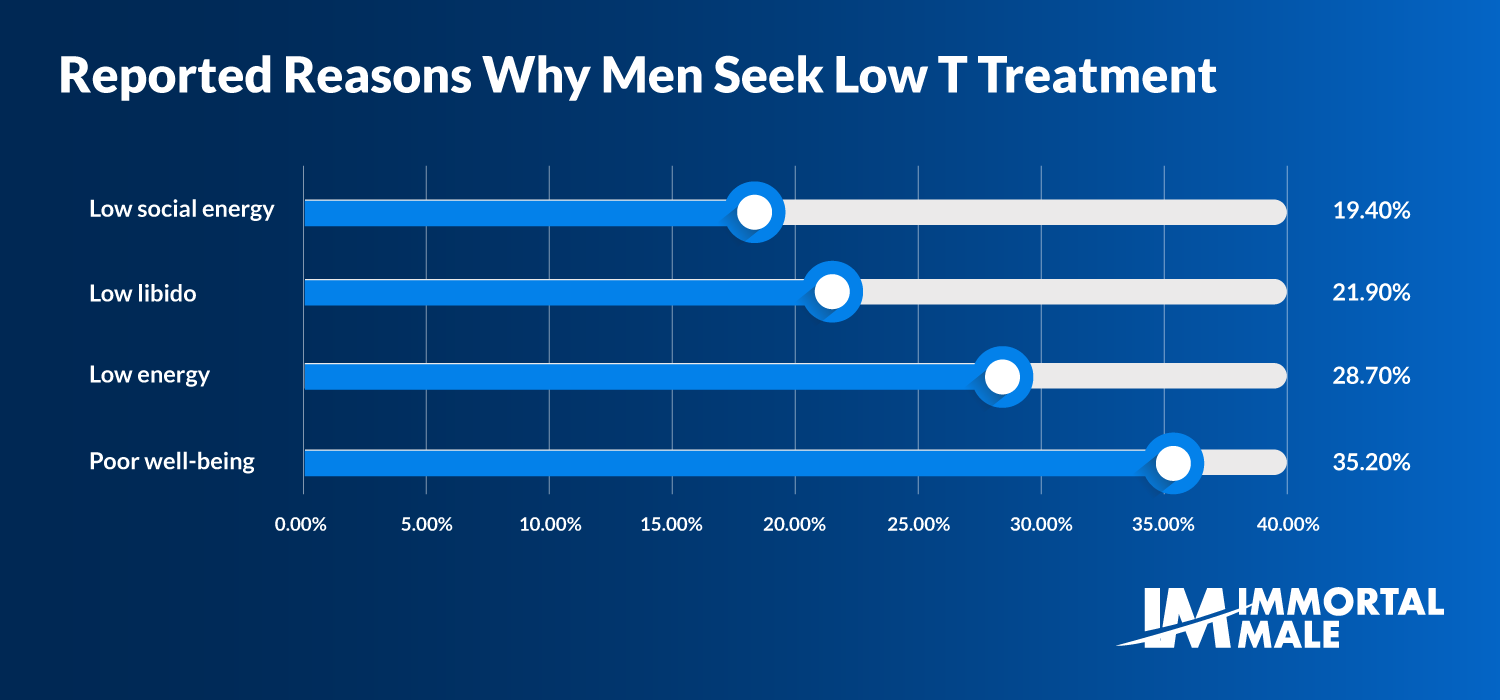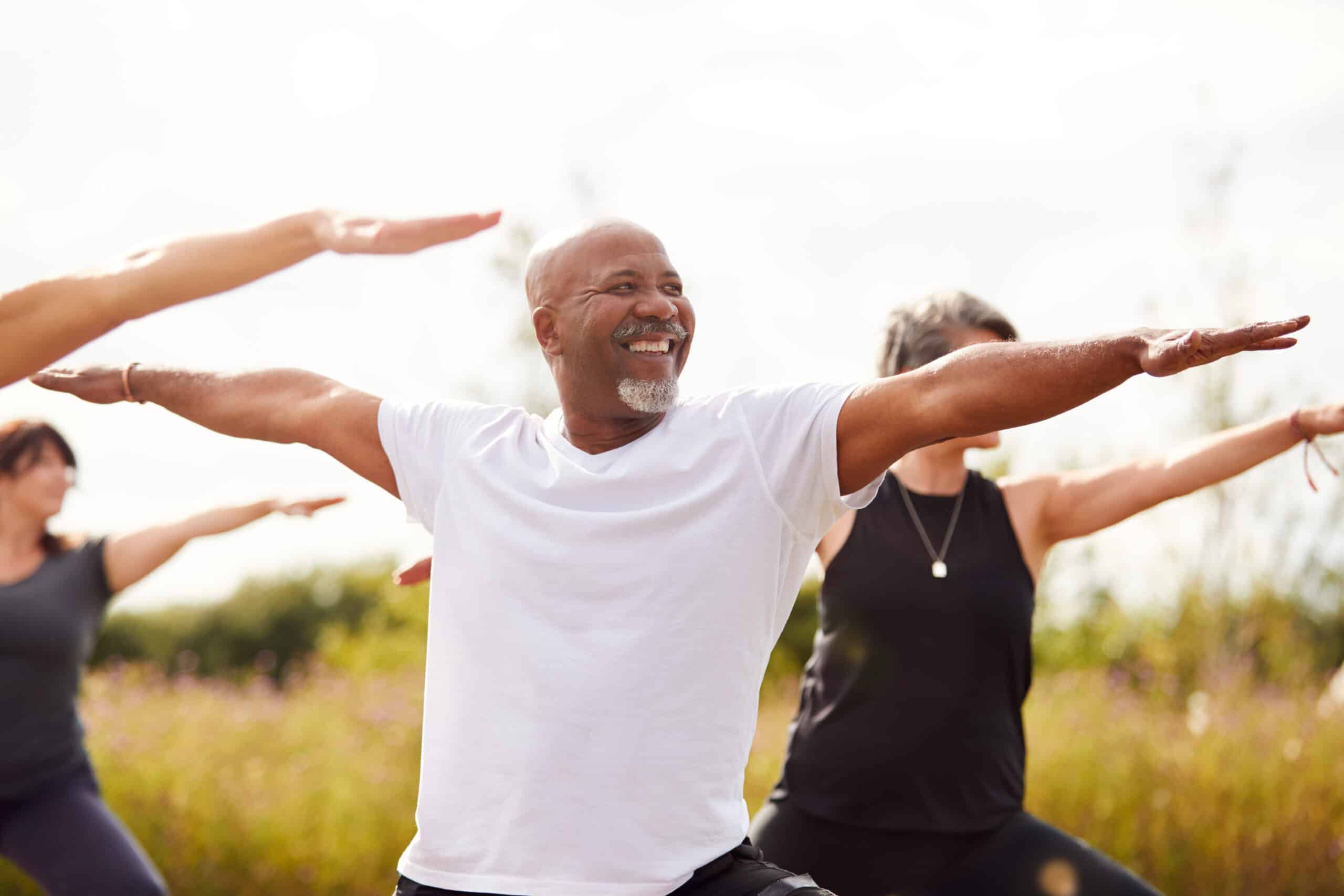Is testosterone anti-aging? Discover how TRT can improve age-related side effects of low testosterone and where you can go to get treatment.
Testosterone is a hormone that plays an essential role in the body, such as helping men regulate several key factors that affect their well-being and growth over their lifetime. Testosterone impacts the following functions:1
Low testosterone, also known as hypogonadism, affects 38.7% of men aged forty-five and older.2 Hypogonadism occurs when the gonads or testes don’t function properly, which then causes the body to produce low levels of testosterone. Testosterone replacement therapy (TRT) is an effective treatment method to increase testosterone levels in those with hypogonadism. This type of treatment can lead many to experience testosterone anti-aging benefits.
Common reasons that men seek treatment for low T include:3
These negative side effects can significantly affect men’s daily lives, leading many men to seek out TRT. TRT can help improve these symptoms by bringing testosterone levels back to a healthy level. Some of the testosterone anti-aging benefits that come from TRT include increased energy, libido, and muscle mass.
Many men will experience a decrease in testosterone with age. Studies have shown that total testosterone levels in men decrease by 1.6% each year after the age of forty, and free, bioavailable testosterone levels decrease by 2% to 3% annually after the age of forty as well.4
Since so many men experience decreasing levels of testosterone as they age, it’s important to know what hypogonadal symptoms look like so men can get help if they need it. Common symptoms of low testosterone include:5

There are many benefits to hypogonadal men starting TRT, all of which can help men lead happier and healthier lives. TRT can lead to testosterone anti-aging effects and a wide variety of health benefits, including:
There are significant connections between obese men and those with low testosterone levels. Studies have shown that obese men have 30% lower testosterone than men within the normal weight range, and 40% have testosterone levels below 300 ng/dL, which is one of the criteria for being diagnosed with hypogonadism.7
Testosterone anti-aging therapy also helps to increase lean body mass while simultaneously decreasing body fat mass, leading to improved physical activity and cardiovascular function in men with healthy levels of testosterone.8

When men age, they often experience decreases in bone mineral density. This decline, coupled with low T, can greatly increase the prevalence of osteoporosis and other conditions related to bone health in older men. Men fifty years and older with osteoporosis have a 20% higher risk of bone fracture, and these incidents often increase as men age.9
Studies of anti-aging testosterone replacement in elderly males have revealed that TRT leads to significant increases in bone density and bone strength. A twelve-month study of TRT in men diagnosed with hypogonadism found that by the end of the study, the participants averaged a 6.1% increase in bone mineral density and a 10.8% increase in bone strength.10
Aging and testosterone deficiency can lead to the loss of verbal, spatial, and mathematical cognitive abilities, which is why many people turn to the testosterone anti-aging benefits experienced in TRT. Studies have concluded that men receiving TRT will often see significant improvements in verbal memory and spatial skills within six weeks of beginning treatment.11
Many people may wonder if testosterone is anti-aging. There are many factors that influence the answer to this question.
The benefits of testosterone anti-aging from TRT, such as increased lean body mass, decreased body fat, and increased energy, can all positively affect the body and mind. In turn, this will often help make TRT patients look more youthful and healthy.

Testosterone anti-aging therapy can make men with low T feel like a younger version of themselves. As mentioned previously, 52.3% of men reported an increase in energy, and 28.5% reported an increase in muscle mass and strength, thus showing how TRT can help people feel more spry.
This is largely due to the fact that testosterone decreases for men as they grow older, and TRT helps to regulate and maintain balanced levels of testosterone. In addition to the natural aging process that everyone goes through, men who have hypogonadism will see increased aging symptoms. This may create more problems related to aging in hypogonadal men. Therefore, starting TRT can help mitigate these aging signs and allow them to feel more youthful and restored through testosterone anti-aging effects.

Studies have shown that testosterone levels decrease by 0.4% to 2% each year in men after the age of thirty.16 This is one of the primary reasons many men forty-five years and older have diagnosable hypogonadism.
The effects of low testosterone with age can make men feel run down, have lower moods, and experience difficulty with physical activities. This is why anti-aging TRT for men with age-related deficiencies is so beneficial, leading may to ask if testosterone anti-aging benefits are right for them.
Low testosterone replacement therapy can help treat the adverse effects of age-related hypogonadism. Many men will experience positive results from treatment, such as testosterone anti-aging, improved mood, and increases in muscle mass, within three to twelve weeks of beginning treatment.17
So, when pondering the question, “is testosterone anti-aging?” it is important to consider the factors typically associated with aging, and how testosterone therapy can help to mitigate them.
Hormones, including testosterone, greatly affect how the body ages. Low levels of testosterone can impact men’s overall health as they grow older, meaning it’s important to have hypogonadal symptoms looked at and fully understand the testosterone anti-aging effects. Some common ways that hormones can affect the aging process include:
TRT does have the potential to make individuals appear more youthful and bring about the effects of testosterone anti-aging.
Low testosterone can result in the poor appearance of hair or hair loss, as it impacts the hair growth cycle and hair follicles.22Similar results have been recorded for skin cells and nails. TRT, on the other hand, has been shown to increase facial and body hair growth and can slow male pattern baldness, giving a more youthful and healthy appearance.
While TRT will not fully reverse aging, it can help reverse or reduce the effects of age-related symptoms caused by hypogonadism in men. As aforementioned, men see increases in muscle mass, energy, and libido as benefits from testosterone anti-aging effects.
Testosterone anti-aging benefits enable men to mitigate the challenges that otherwise accompany age and lead fulfilling lives unbridled by hypogonadism.
Many types of TRT treatment are available to help raise testosterone levels. The most common forms of TRT are injections, topical gels, skin patches, and pellets.
Medical professionals usually recommend taking testosterone continually after starting, unless a patient experiences serious negative side effects from treatment. Stopping TRT usually results in testosterone anti-aging effects and T levels returning to what they were before treatment. For those worried about the effects of long-term testosterone treatment, your doctor can help address any concerns you might have.
There have been many long-term studies conducted on TRT. A ten-year study showed that men who continuously took replacement testosterone had minimal side effects while only continuing to see benefits from treatment.26

If you’re looking to learn more about TRT and testosterone anti-aging benefits, you can get started with the treatment process through Immortal Male. At Immortal Male, we make it easy for you to check your testosterone levels, get medical recommendations, and start a treatment program.
The first step you will take is purchasing an Immortal Male At-Home Hormone Test Kit that checks your testosterone levels and other important hormones. The hormone testing process is easy and simple. All you have to do is wait for us to ship it to your doorstep, follow the instructions, and mail it back. A medical professional from Immortal Male will be in touch with you to review your results soon after.
If our medical staff determines that you would benefit from TRT and testosterone anti-aging effects, Immortal Male offers a convenient monthly subscription where we will ship everything you need for treatment to your doorstep each month. This helps eliminate doctor visits, scheduling appointments, and trips to the pharmacy. If you have any questions about the treatment process or the testosterone anti-aging process, contact us today for more information.
Immortal Male is an online clinic that helps men optimize their hormones.
As part of your membership and as medically indicated, physicians prescribe medications, and recommend supplements that are delivered to you from the comfort of your home.